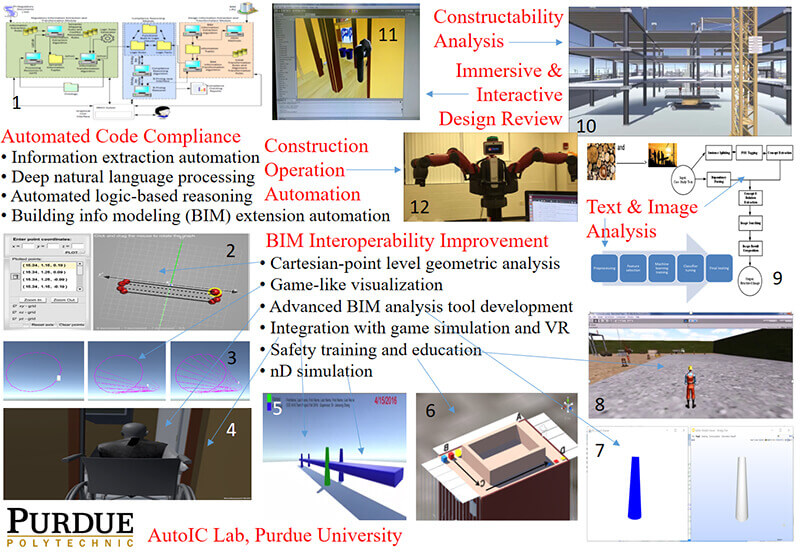June 18, 2019
AI, robots, data software helping create new approach for planning cities of the future
 Purdue University researchers have come up with a new method to help create future city layouts. (Stock photo)
Download image
Purdue University researchers have come up with a new method to help create future city layouts. (Stock photo)
Download image
WEST LAFAYETTE, Ind. – Artificial intelligence and robots are playing significant roles as planners develop the cities of the future. The architecture, engineering and construction (AEC) industry is facing a major shift in balancing the massive amounts of data available through advanced technologies.
The system they use, called building information modeling (BIM), takes all the data points and information to develop plans at all stages of construction – from planning to maintenance to demolition. Purdue University researchers have come up with a novel way to approach the data, simplify the BIM software and help in creating future city layouts.
The Purdue team created a new method for better understanding and using industry foundation classes (IFC), which is the term given to the data used to create the BIM software.
“It normally requires a large amount of effort when manually interpreting IFC data due to its large number of entities and the complex connections between one entity and another,” said Jiansong Zhang, an assistant professor in Purdue’s Polytechnic Institute, who leads the research team. “Our technology helps BIM software developers create IFC-based solutions for any task in the life cycle of an AEC project.”
Zhang said the new technology allows for full software development based on IFC data.
 Purdue’s AutoIC Lab develops and leverages advanced technologies to support construction engineering and management, construction automation, and sustainable infrastructure, including building information modeling (BIM). (Image provided)
Download image
Purdue’s AutoIC Lab develops and leverages advanced technologies to support construction engineering and management, construction automation, and sustainable infrastructure, including building information modeling (BIM). (Image provided)
Download image
“We created a visualization algorithm and implemented it based on the new method we developed,” said Zhang, who also leads Purdue’s Automation and Intelligent Construction Lab. “The new method can help eliminate missing or inconsistent information during software development.”
The data covers all sectors, functions and life cycle phases of software development for construction projects.
Zhang and his team are working with the Purdue Research Foundation Office of Technology Commercialization on patenting and licensing the technology. They are looking for partners interested in licensing it.
The work aligns with Purdue's Giant Leaps celebration of the university’s global advancements made in artificial intelligence as part of Purdue’s 150th anniversary. It is one of the four themes of the yearlong celebration’s Ideas Festival, designed to showcase Purdue as an intellectual center solving real-world issues.
About Purdue Research Foundation Office of Technology Commercialization
The Purdue Research Foundation Office of Technology Commercialization operates one of the most comprehensive technology transfer programs among leading research universities in the U.S. Services provided by this office support the economic development initiatives of Purdue University and benefit the university's academic activities through commercializing, licensing and protecting Purdue intellectual property. The office is managed by the Purdue Research Foundation, which received the 2016 Innovation and Economic Prosperity Universities Award for Innovation from the Association of Public and Land-grant Universities. For more information on licensing a Purdue innovation, contact the Office of Technology Commercialization at otcip@prf.org. For more information about funding and investment opportunities in startups based on a Purdue innovation, contact the Purdue Foundry at foundry@prf.org.The Purdue Research Foundation is a private, nonprofit foundation created to advance the mission of Purdue University.
Writer: Chris Adam, 765-588-3341, cladam@prf.org
Source: Jiansong Zhang, zhan3062@purdue.edu

